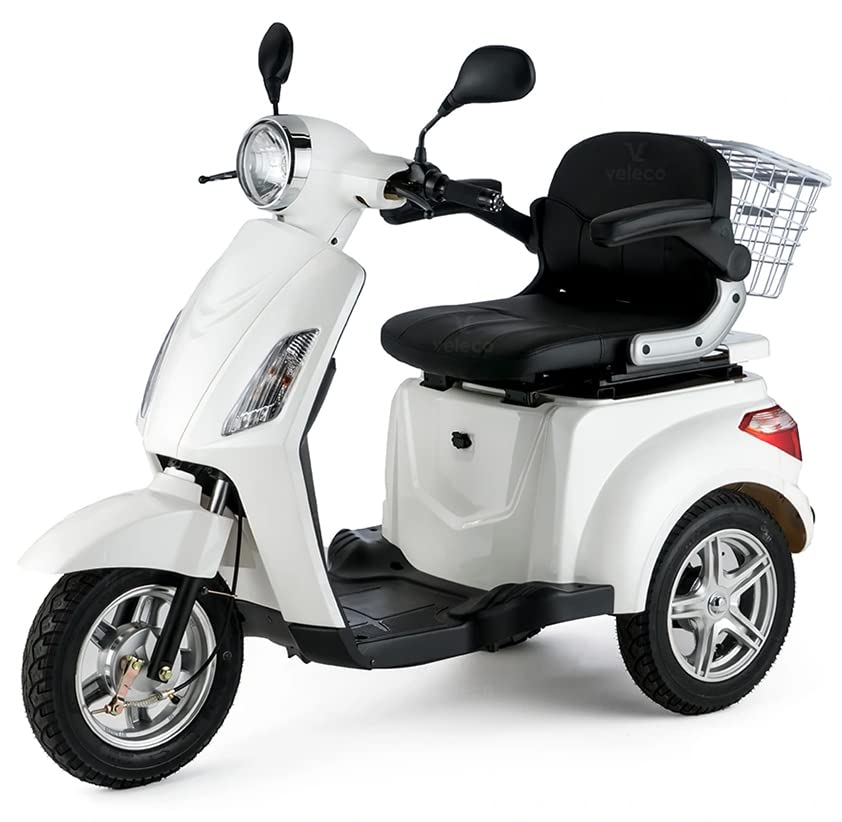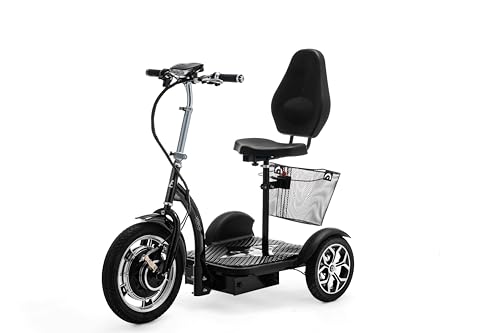What's The Job Market For Mobility Scooters Road Or Pavement Professio…
페이지 정보

본문
 The Basics of Using a Mobility Scooter on the Pavement
The Basics of Using a Mobility Scooter on the PavementMobility scooters can be lifesavers to those who struggle to maintain their physical health. They enable them to travel farther distances and make getting around much simpler.
Class two scooters should not be driven faster than 4 mph in the roadway and should not be driven on cycle lanes, bus lanes, or on sidewalks. They should also not be driven on dual carriageways unless they're carrying an amber flashing light that is active.
Scooters on the road
Mobility scooters are a well-known and convenient mode of transportation for people who are unable to walk, but they must be used in a safe manner. In addition to keeping the vehicle in line with the manufacturer's guidelines, drivers must adhere to local regulations and be aware of safety concerns for pedestrians and other vehicles. The first step in using a mobility scooter is to become familiar with the local rules and regulations.
Scooters shouldn't be used on roads, but only on footpaths or sidewalks. They are not designed to withstand vehicular traffic and speeds, and could cause injuries or damage to other road users. Scooters are also slower to stop and are more difficult to see. Therefore, it is essential to wear a reflective jacket and keep your eyesight sharp when riding a scooter on the road.
Some municipalities have restrictions on where you can drive your mobility scooter, but it is generally safe to drive one on the majority of streets. It is recommended to have a front-facing mirror as well as have headlights for low visibility. It is also recommended to use a rear-view mirror in order to be able monitor other vehicles and obstacles. If you're not sure about how to operate a mobility scooter on the road, it's recommended to attend a course of instruction offered by local schools or insurance companies.
Mobility scooters of class 3 mobility scooters 3 can be driven on the road however they should not be used 8mph mobility scooters second hand in bus lanes or cycle-only lanes. They should be avoided on dual carriageways with speeds that exceed 50 mph. It's also an excellent idea to equip your scooter with a flashing amber light to enhance its visibility.
When you are riding a scooter, it is crucial to make sure that you are visible to other drivers. Also, make sure that your scooter is outfitted with a suitable lighting system to minimize the chance of collisions. Avoid driving your scooter at night as it is dangerous for both you and other road users.
Scooters on the pavement
Mobility scooters have enabled thousands of people in the UK to move around with ease. However, it's important to keep in mind that these vehicles are classified as a kind of vehicle and therefore must be used cautiously. Many new mobility scooter drivers are often confused about the rules and regulations surrounding them. This article will explain the basics of how to ride a scooter on the road.
There are two kinds of mobility scooters that are class 2 and 3. Class 2 scooters are only driven on pavements and in pedestrian areas. They have a maximum speed of 4 mph. Class 3 scooters are driven on road and pavement and their speed may be increased to 8 mph.
In general it is not permitted to drive a scooter on the cycle lanes or bus lanes. This is to avoid collisions between motorists and scooter users. It is also illegal to park a scooter on a sidewalk if it will hinder pedestrians' access or cause an obstruction.
The pedestrian should always give way to other pedestrians on the sidewalk including wheelchair users and those who use prams or pushchairs. Mobility scooters are quick and heavy, which means they pose a serious danger to pedestrians, especially when they're not paying attention or have visual or hearing impairments.
If you're planning to travel through shops on your scooter, keep in mind that most doors to shops are designed for wheelchairs as well as smaller pavement scooters. Also, you should only travel at pedestrian speed, which is no more than four mph, as people tend to walk slower inside shops.
If you want to use your mobility scooter on public transport it is important to ensure that it's registered to the Confederation of Passenger Transportation's code for boarding and leaving buses. In most cases, you will be asked to complete an instruction session prior to when you are able to use your mobility scooter on buses.
Scooters on the streets
Many seniors use mobility scooters for transportation because they can assist them in staying independent and prevent the need to move into an assisted living facility. However, they should be aware of the rules of the road and how to safely operate their scooter. For example, they should wear helmets and keep them well-maintained and avoid riding in poor weather. They must also adhere to all traffic laws, and remain on the right-hand side of the road.
Many municipalities limit the roads on which mobility scooter class 3 scooters can travel in order to ensure safety and avoid congestion. This is because mobility scooters are generally designed to be driven on sidewalks and pedestrian areas, and allowing them on roads can mobility scooters use the road cause traffic disruptions. However, these restrictions are not always enforced and it is important to be aware of the laws in your region.
Generally, mobility scooters are not allowed on roads and areas with high traffic even though they travel faster than a vehicle. Additionally, they are not allowed to drive in cycle lanes or bus lanes, which can be dangerous for drivers as well as other users of the road. If you're uncertain about the laws in your area it is recommended to get insurance for your scooter.
Mobility Scooters Road Or Pavement scooters should also be operated on sidewalks and other pedestrian areas at a reasonable speed. So, they don't present a risk to pedestrians or obstruct the traffic. They should also obey all traffic signals and use designated crosswalks when crossing the street. They should also be visible by wearing bright clothing and reflective equipment.
Insurance is not a requirement of law, but it is highly recommended. It will safeguard you from a collision or loss and cover the repair costs in the event that an unavoidable failure occurs. You can also invest in additional equipment like reflectors or a flag for your scooter to improve your visibility and make you stand out. Consider purchasing a breakdown insurance policy to protect your scooter in the event of a break down on the road.
Scooters in the car park
Mobility scooters are a great option to gain independence and freedom if you are unable to move around. They let users travel in their local area without relying on the schedules of family members or friends. They also provide a convenient method to get to nearby shops and cafes. The ubiquity of these scooters can be both positive and negative impacts on urban environments.
While the majority of countries consider scooters to be pedestrian vehicles, some areas may have difficulty accommodating these scooters on sidewalks and pedestrian routes. The weight and size of the scooters make them difficult to maneuver through these spaces, and some obstacles (such as garbage cans or trees) may hinder movement. These scooters are often utilized by elderly people who have limited mobility. This makes them more vulnerable to falling.
It is crucial to know the laws and rules that govern scooters in public. In the UK, for example, all scooters are mobility scooters road legal required to be driven at a speed of no more than 4 mph in areas that are pedestrian-friendly and on pavements. Also, they cannot be parked on sidewalks since this could block access for other pedestrians.
It is also important to be aware that scooters can't be driven on cycle lanes or bus lanes, and they must not be parked where they hinder access for other people who need mobility scooters. Scooters must also not be driven on dual-carriageways, unless they have an amber flashing light.
Additionally, scooters may be parked in handicap parking spots provided that they have ramps that are accessible and are in compliance with applicable laws. While these rules are fairly standard across the country however, it is essential to check local laws to ensure that you don't violate any of them.
The increasing popularity of mobility scooters has created an increased demand for parking in the UK. These spaces should be placed close to the homes of users and close proximity to the places that they frequently visit. Idealy, these spaces would also be protected from weather and theft. In this way, the growing presence of scooters can positively affect the design of urban spaces by ensuring a safe space for scooter riders and pedestrians.

- 이전글See What Reallife Sexdolls Tricks The Celebs Are Using 24.09.04
- 다음글My Life, My Job, My Career: How 6 Simple Learn More About Sewer Repair Helped Me Succeed 24.09.04
댓글목록
등록된 댓글이 없습니다.

